This building stands on the east side of the docks, between Llanthony Warehouse (now Gloucester Waterways Museum) and Llanthony Road, where it crosses Llanthony Bridge. The name ‘Llanthony’ is taken from the now-ruined medieval priory on the west bank. Llanthony Secunda Priory was established by Miles de Gloucester in 1136. Like his father and grandfather, Miles was High Sheriff of Gloucester and was also Lord High Constable of England.
A photograph and text about The Lord High Constable of England.

The text reads: This site, on the east side of Gloucester docks, at Llanthony Bridge, was previously known as Coots café and bar. The name ‘Llanthony’ is taken from Llanthony Secunda Priory – the name given to the medieval priory which had once occupied the west bank. The now-ruined priory was established in 1136 by Miles de Gloucester, the High Sheriff of Gloucester, who was also Lord High Constable of England.
Through a 1580 charter from Queen Elizabeth, Gloucester was given the formal status of a port. By the 18th century, very extensive traffic had built up between Bristol and the Midlands. Several canals were built to link with the River Severn, including the Staffordshire &Worcester Canal, opened in 1772. These developments encouraged a continuing growth in river traffic, highlighting the restriction caused by the narrow winding stretch below Gloucester which could be navigated for only a few days each month. These issues resulted in a proposal to build a canal between Gloucester and Berkley Pill – large enough to admit sea-going ships of 300-400 tons.
Before the opening of the main basin in 1812, few sea-going vessels ventured to the city quay, owing to the difficulties in navigating the treacherous River Severn. The canal linking the basin to the Severn was formally opened in 1827 when a huge crowd gathered to watch the first two vessels enter the basin.
As the work was nearing completion, there was concern that the basin would not be large enough for the trade expected. So, an additional barge arm was constructed to ensure that the main basin could be kept free for sea-going vessels.
Early imports included corn from Ireland and the Continent, timber from the Baltic and North America and wines and spirits from Portugal and France. The main export was salt, brought down the river from Worcestershire.
By the late 1840s, the main basin was often very overcrowded, so, new warehouses and quays (such as Britannia Quay) were constructed to cope with this booming trade. Standing next to this building is the former Llanthony Warehouse – the largest of the warehouses to be built in Gloucester Designed by Capel N Tripp, it was built in 1873 (at a cost of just over £7,000) for corn merchants Wait James & Co which had traded at the docks for many years.
The Llanthony Bridge keeper’s house also stands next to this building. It was built in 1852 at a time when the bridge was in its original wood construction. The threat of serious fire in the timber yards prompted the construction of the Salamander fire float, introduced in 1906 and berthed outside the building in Britannia Quay, until its conversion to a pleasure craft in 1955.
A plaque documenting the history of The Lord High Constable of England.

The plaque reads: These distinctive dockside premises were built in three parts. The middle section is a Victorian saw mill – originally more than twice as long and part of the long-standing timber yard which extended across the present car park. The front and back sections were a school room and offices, both built by Gloucester Waterways Museum which is housed in the adjacent Llanthony Warehouse. The name ‘Llanthony’ is taken from the nearby Llanthony Secunda Priory. The now-ruined priory was established in 1136 by Miles de Gloucester. Like his father and grandfather, he was High Sheriff of Gloucester and Lord High Constable of England.
These premises were refurbished by J D Wetherspoon and opened in June 2015.
A photograph of warehouses on the east side of the Main Basin viewed from the lock.
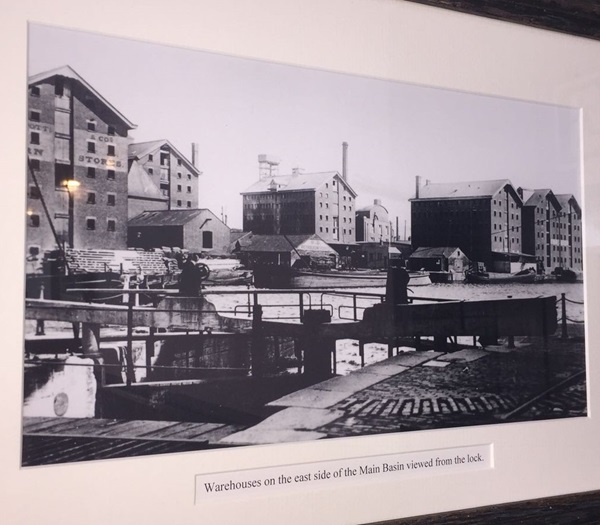
A photograph of the docks, Gloucester, 1923.
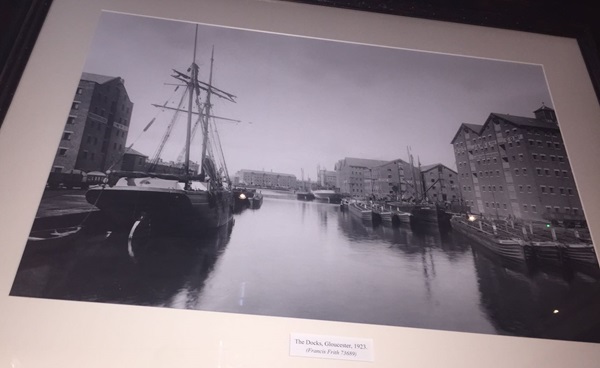
A photograph of sailing ships moored in the middle of the Main Basin in 1883 so that salt could be transferred from narrow canal boats on both sides at the same time.
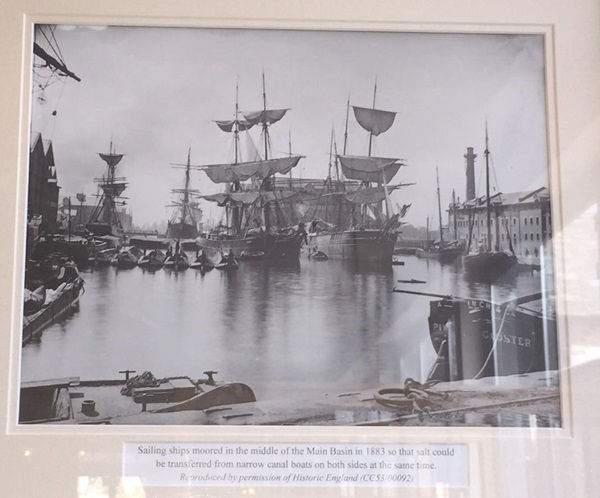
A photograph of Llanthony Warehouse with Severn & Canal Carrying Company narrow boats.
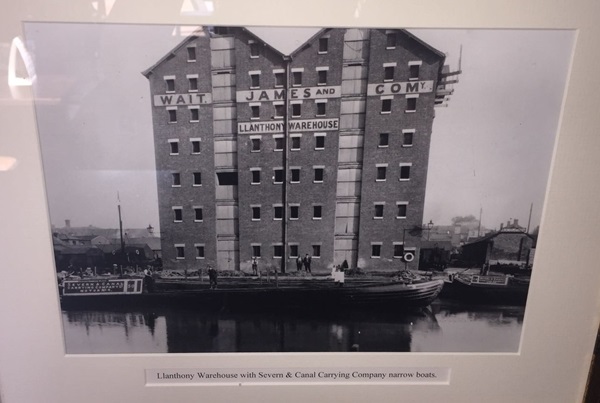
A photograph of the cathedral from the docks, 1950.
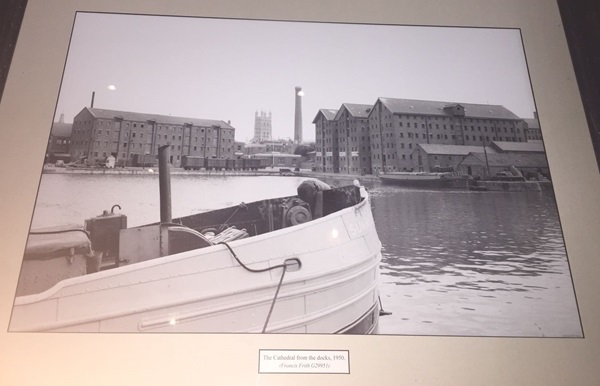
A photograph of the docks, Gloucester, 1912.
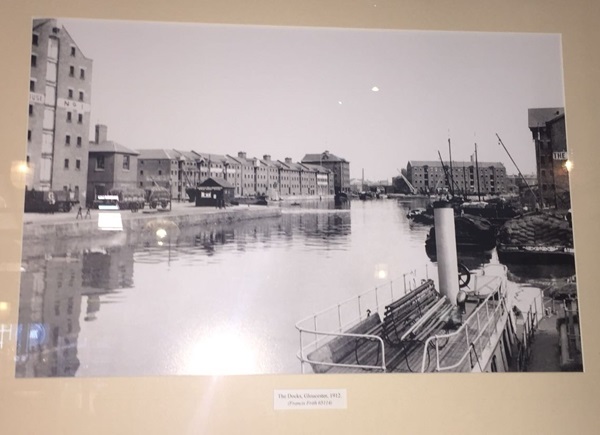
A photograph of a pair of Midland Co horses towing a wagon across the North Quay.

A photograph of the docks, Gloucester, 1932.

An illustration of Pillar Warehouse and Bakers Quay on the right with Llanthony Bridge and the warehouse around the Main Basin on the left, 1843.

A photograph of a Roman timber yard with Llanthony Warehouse in the background.

A photograph of LMS tank shunting locomotive crossing Llanthony Bridge.

An original polished aluminium ship’s telegraph.
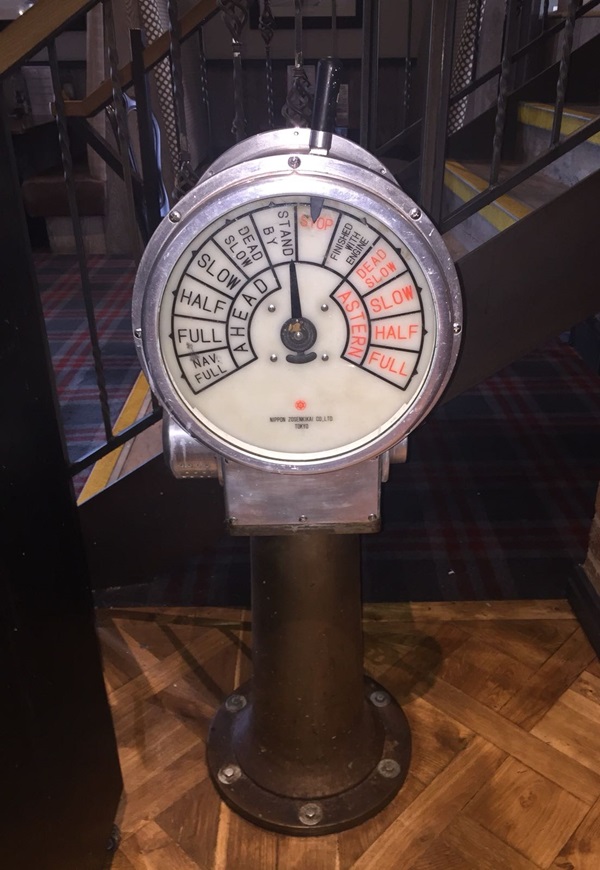
The telegraph on board a sea-going ship coming to Gloucester would have been used as a communicating device to transfer orders of change in speed or direction from the navigational officers on the bridge to the engine control room. The lever is moved over different speed positions for ahead and astern direction. This telegraph was made by the Nippon Zosen Kikai Company Ltd of Tokyo in between 1960 and the early 1980s and reclaimed from a Japanese maritime vessel.
An original ship’s telephone.

This solid brass ship’s telephone from the 1940s, taken from an American-built liner made by the Henschel Corporation of Amesbury, Massachusetts would have been seen on various vessels coming into Gloucester Docks in the mid 29th century. The handset is enclosed within the brass casing.
An original foundry pumps.
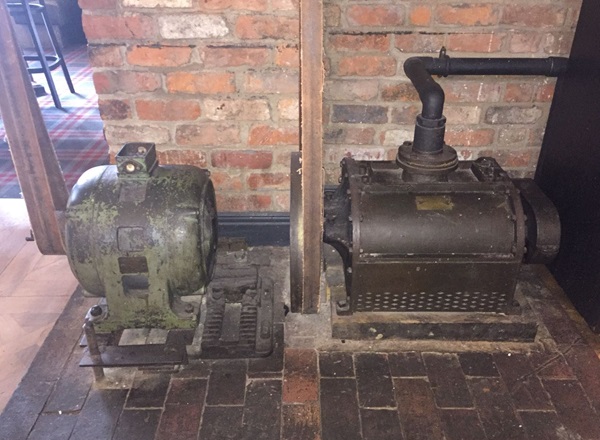
These existing pumps, which are belt driven, were used to fuel air into the furnaces to generate the heat from which the blacksmiths could forge their metal.
An original Brown Bros brass ship’s wheel.

This ship’s wheel, which is similar to many of those on board vessels steaming out of Gloucester Docks, was manufactured by the celebrated Brown Bros of the Rosebank Ironworks, Edinburgh, a can be seen inscribed on the central brass hub. The same company also designed the Titanic steering stations.
An original anvil table.
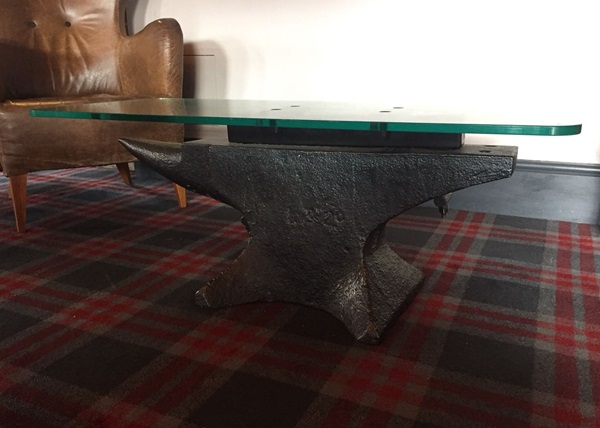
This anvil was one of the original items we found within the foundry. It was used by the blacksmiths to shape their metal work and has now been carefully designed to create a bespoke modern coffee table.
External photograph of the building – main entrance.
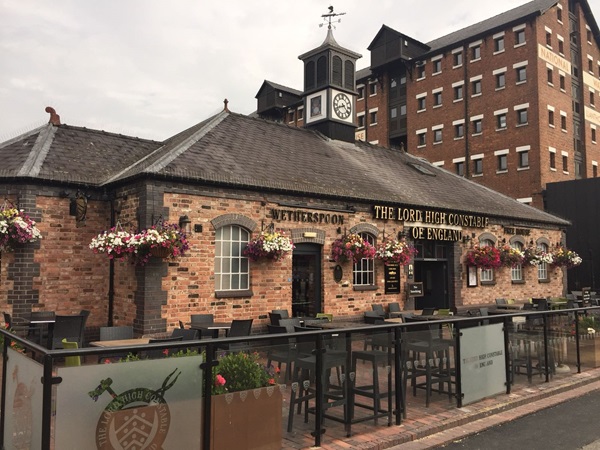
If you have information on the history of this pub, then we’d like you to share it with us. Please e-mail all information to: pubhistories@jdwetherspoon.co.uk